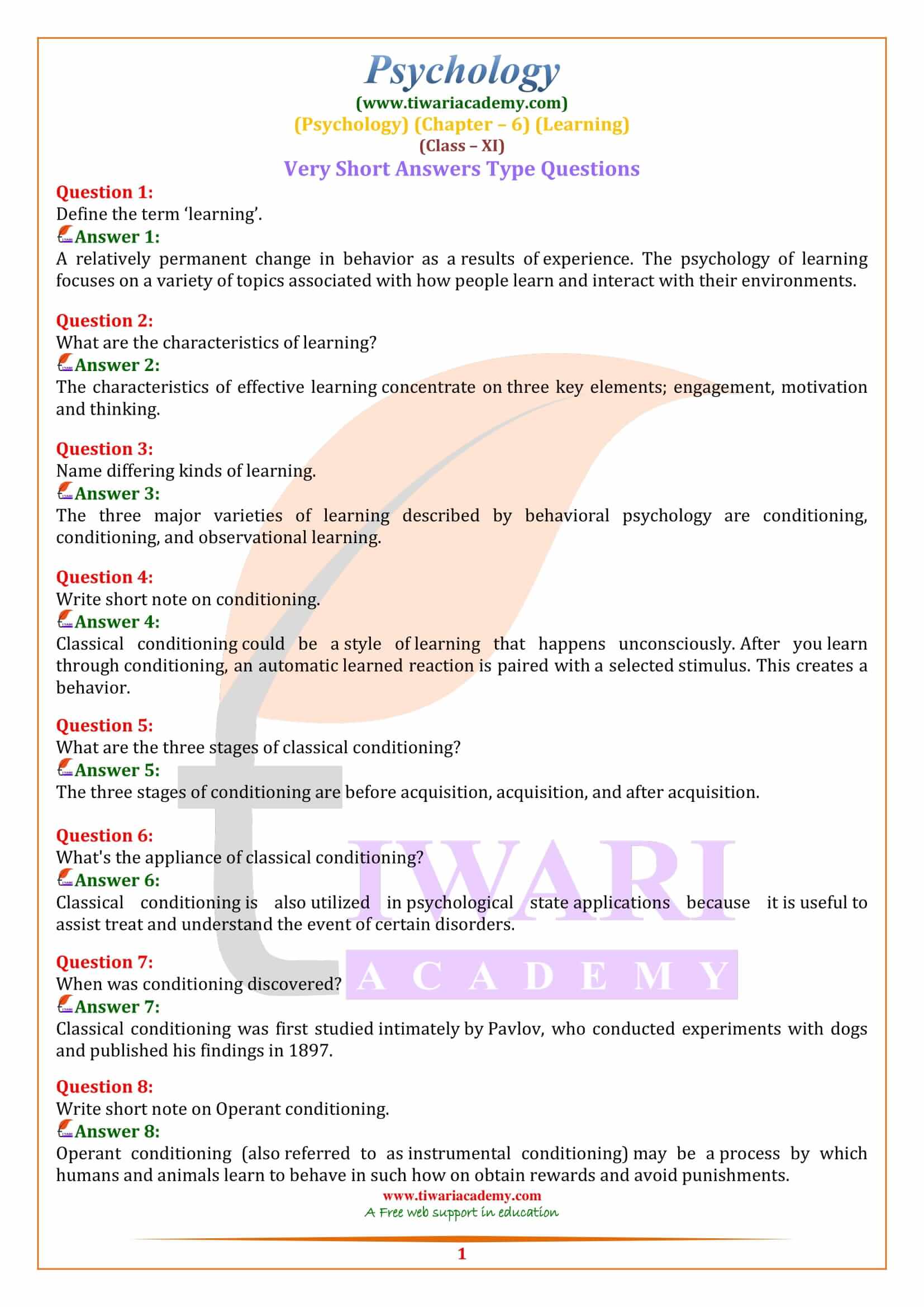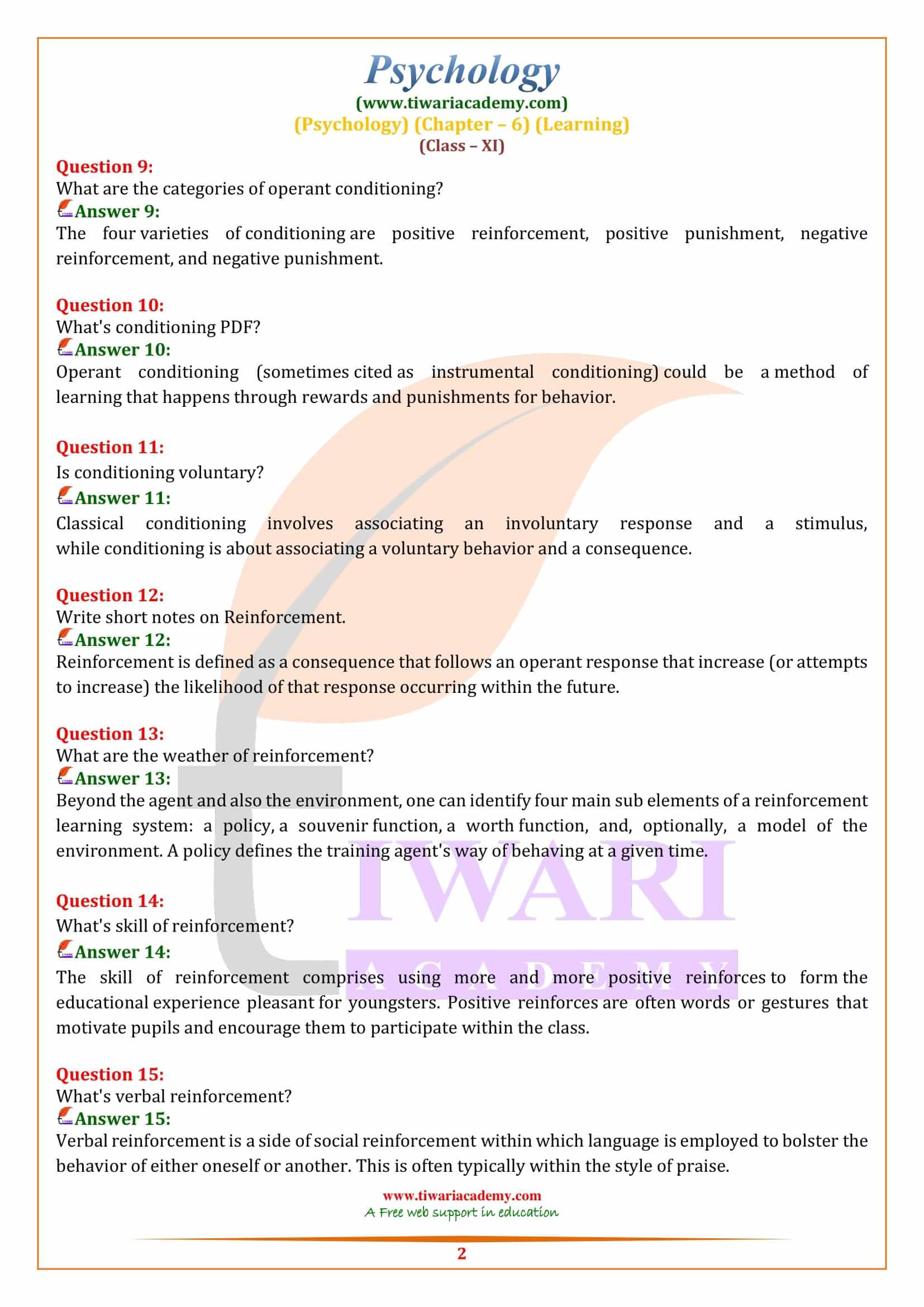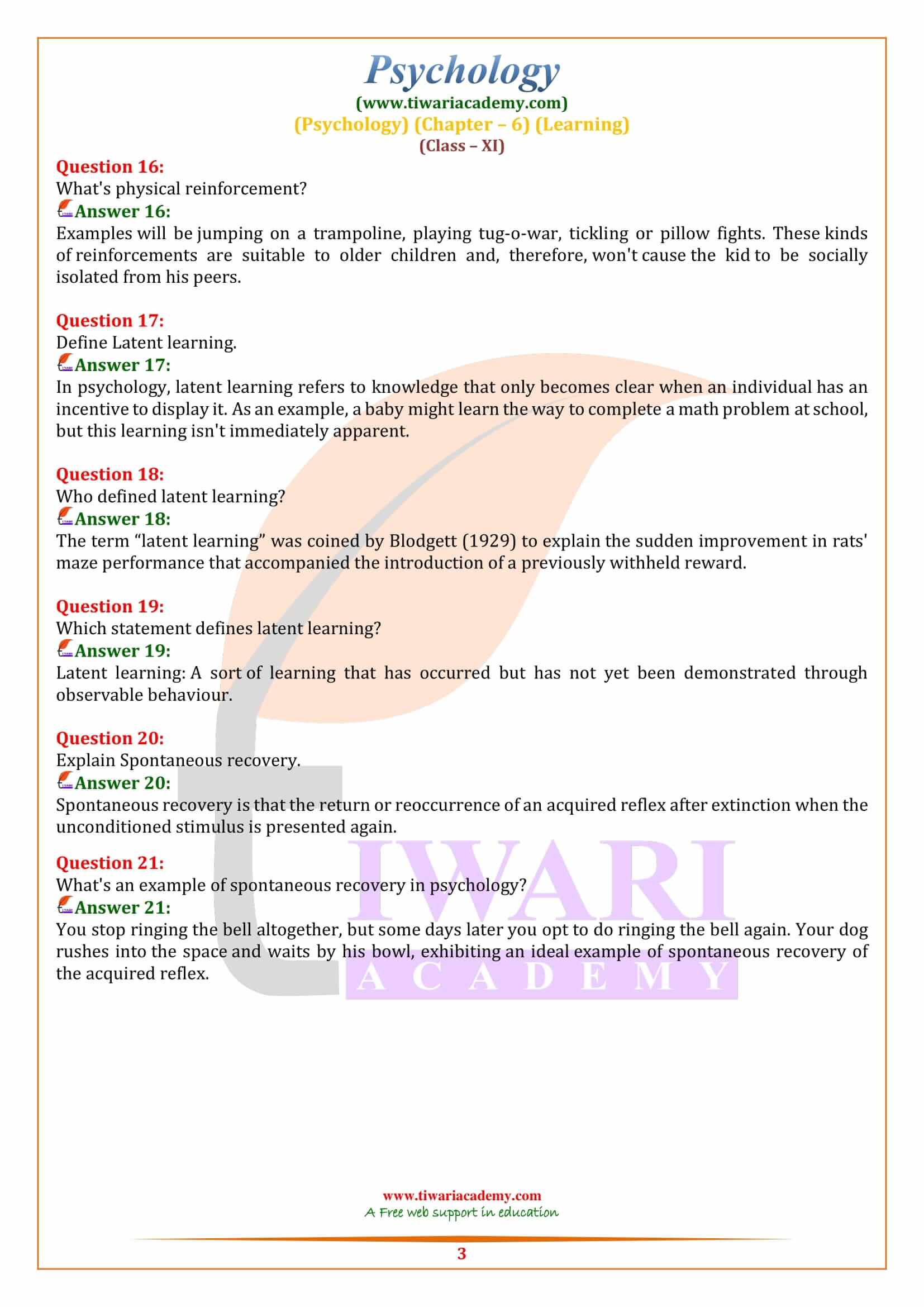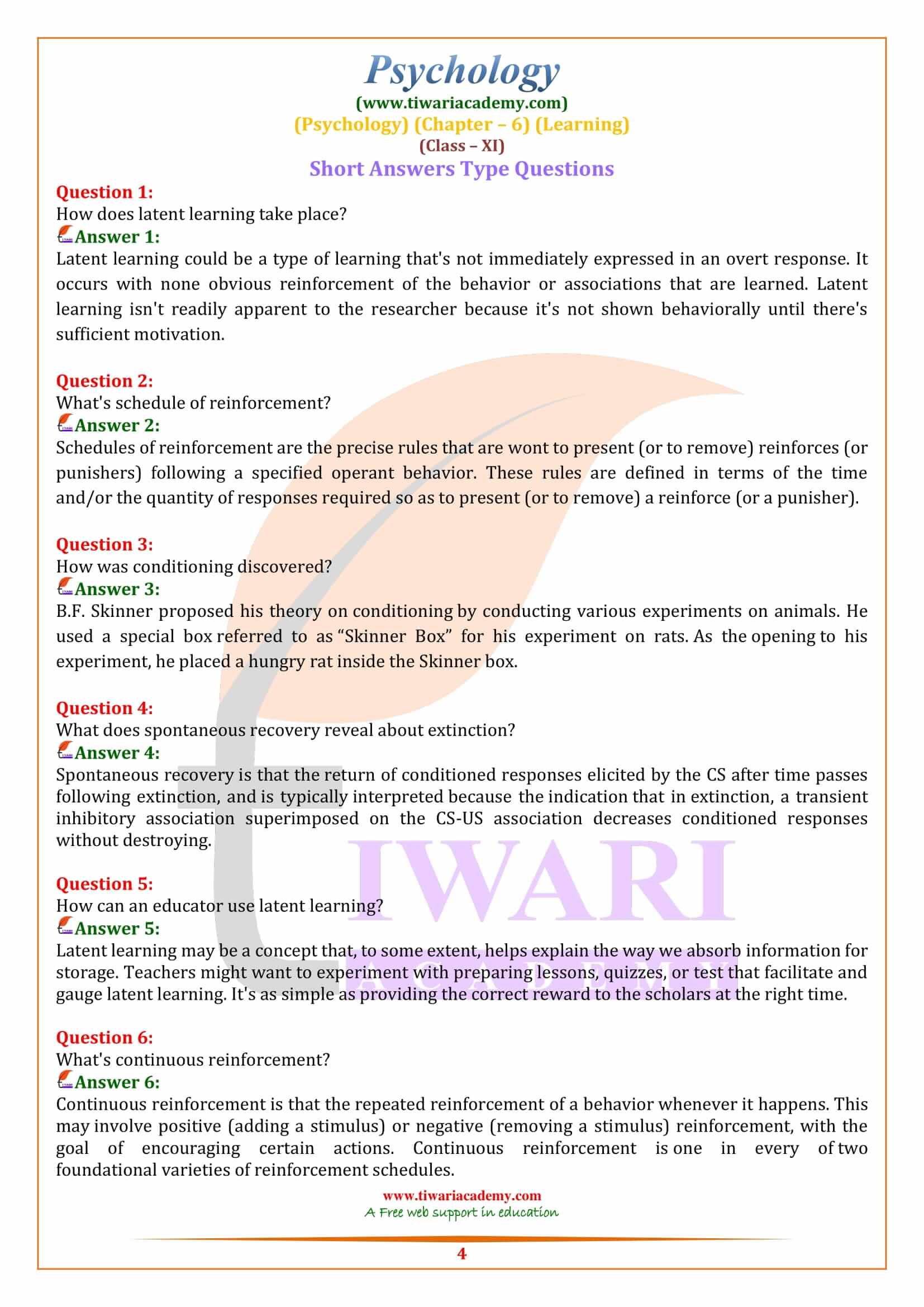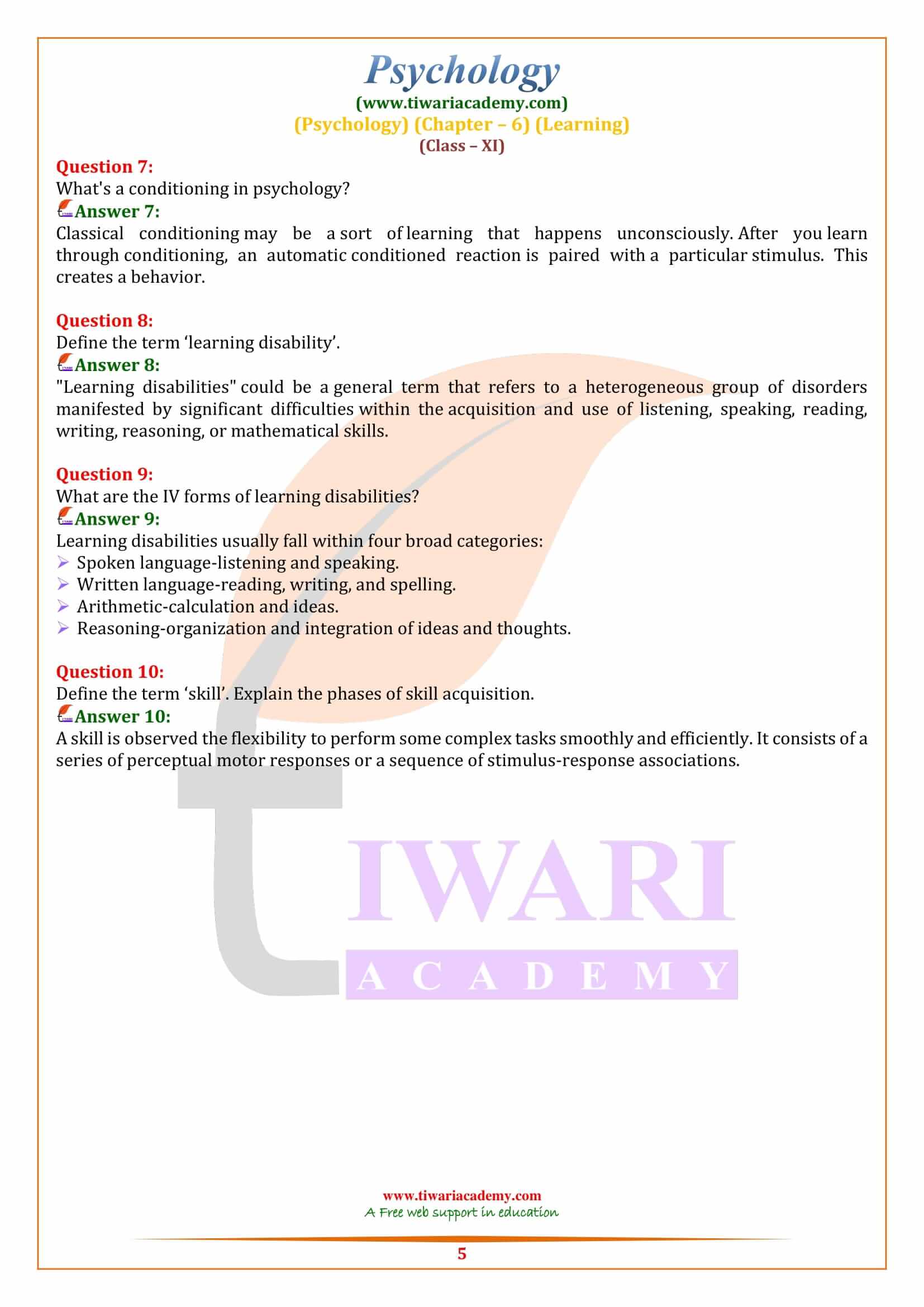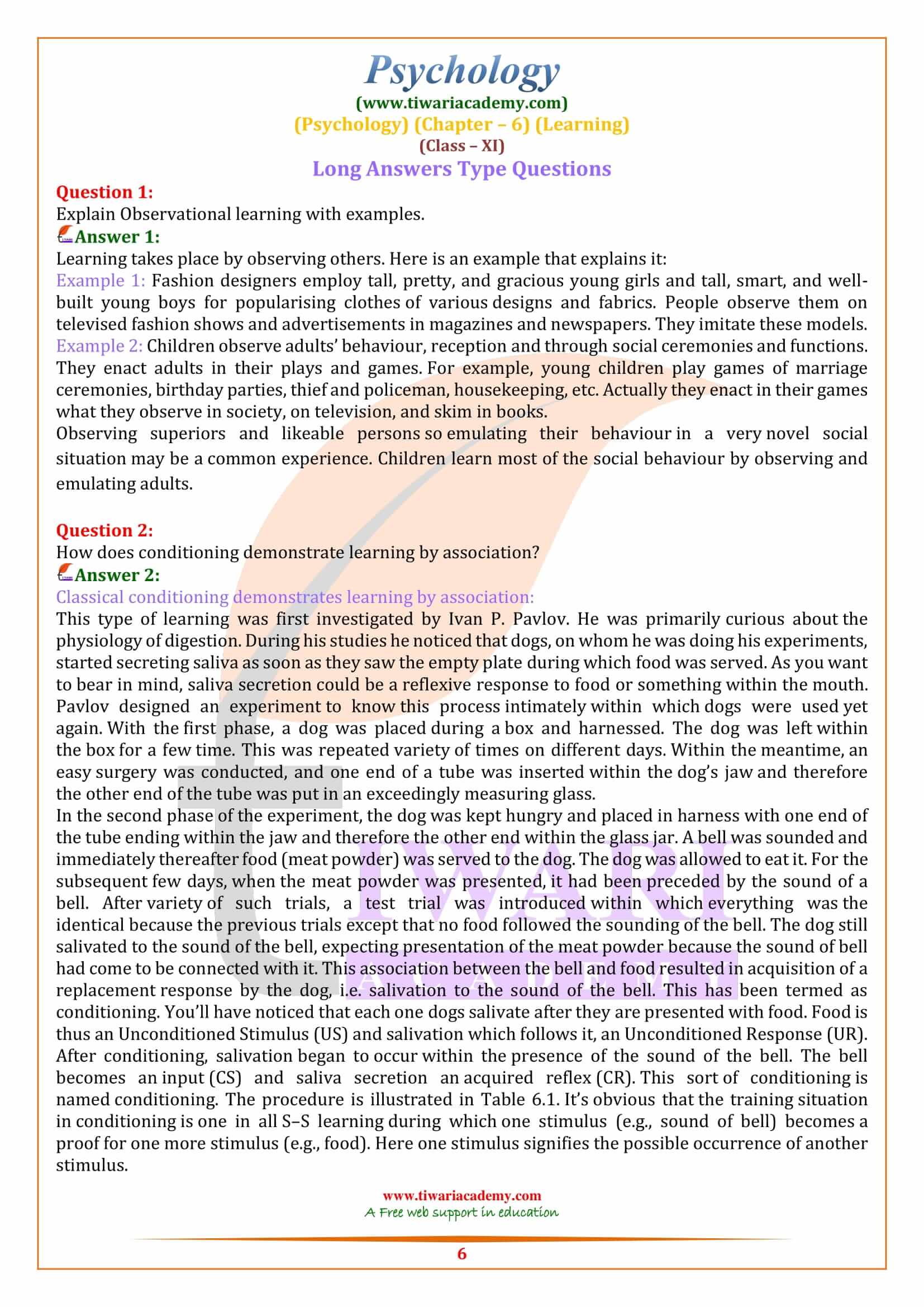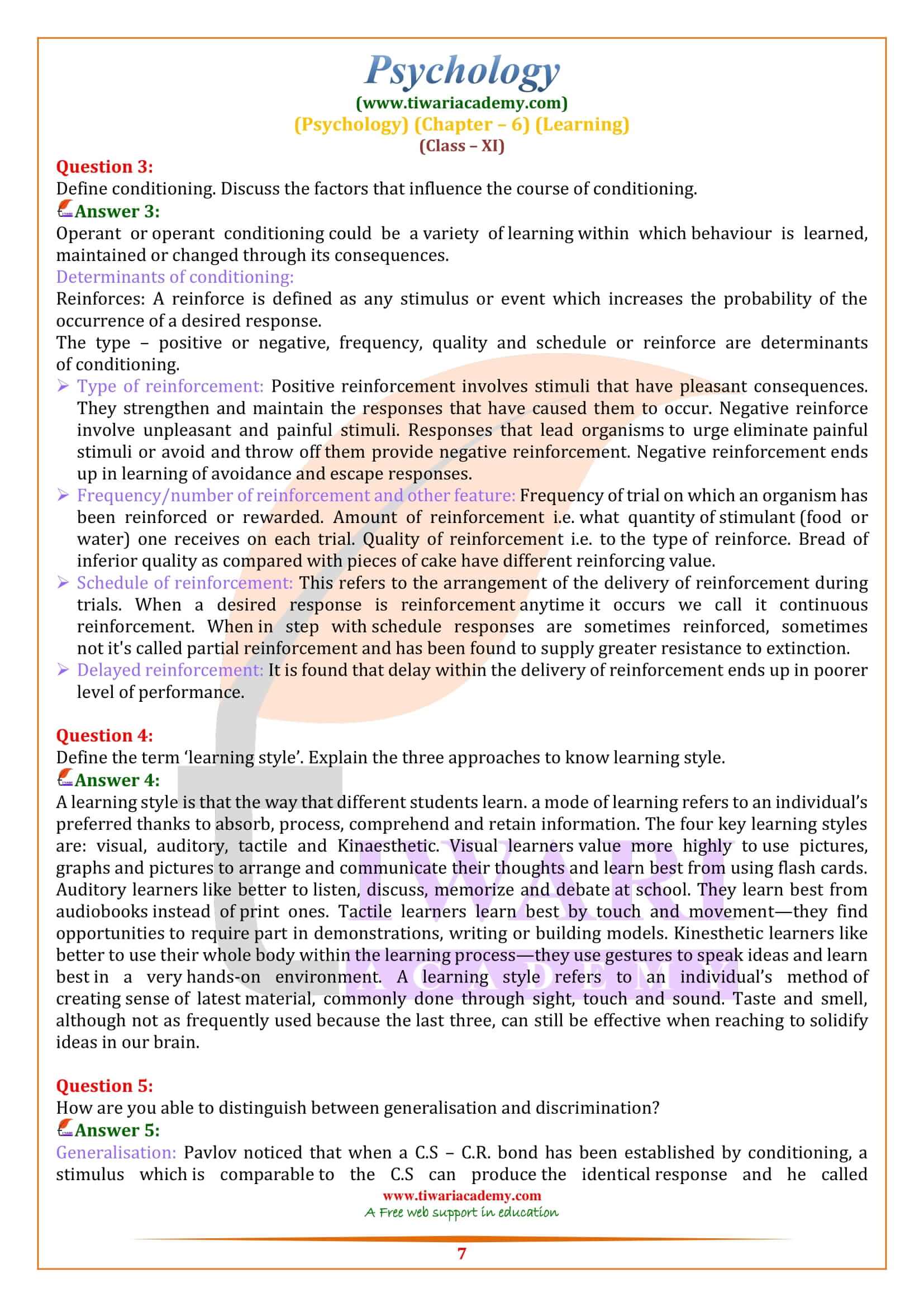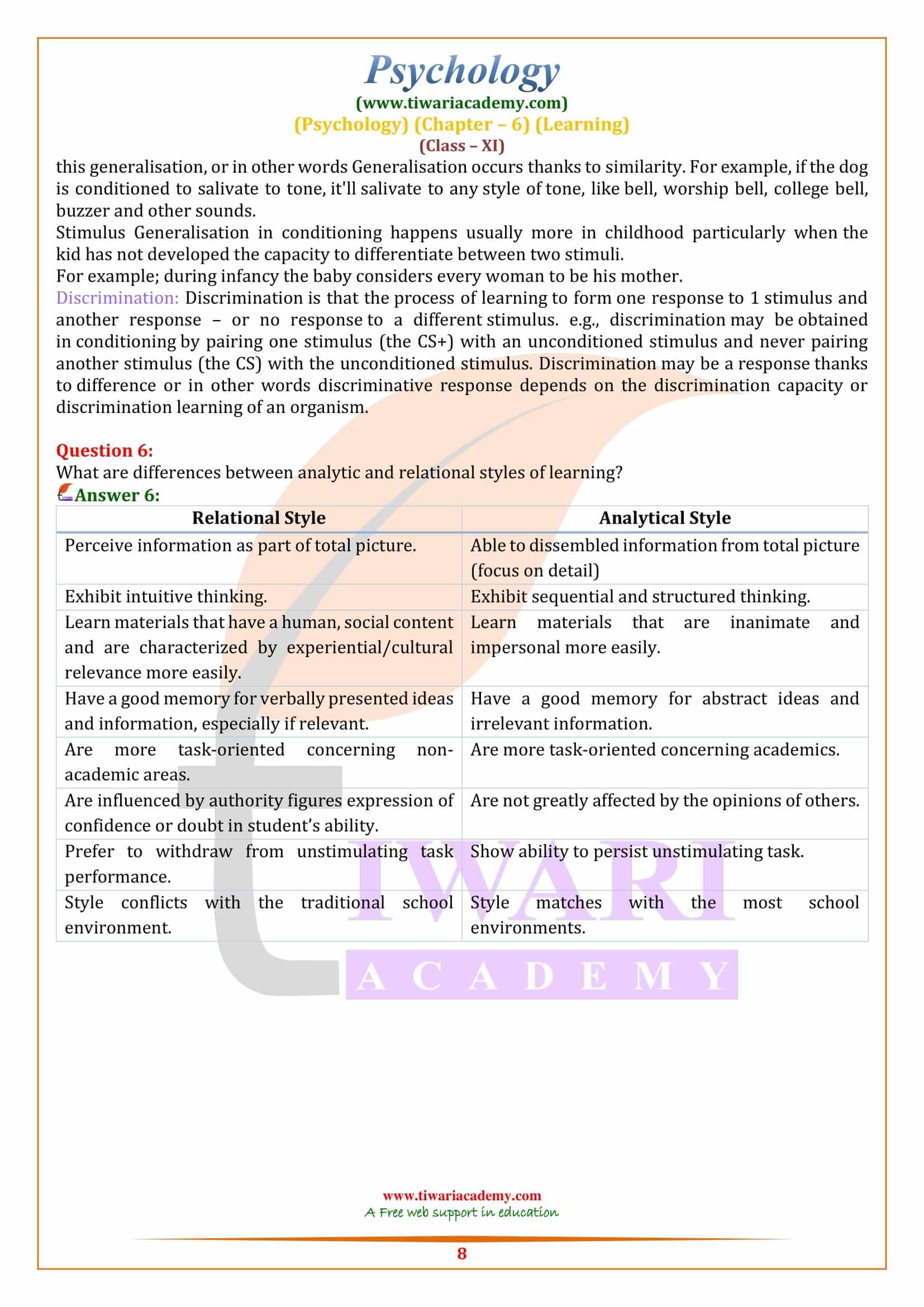Class 11 Psychology Chapter 6 Important Questions Learning Question answers, MCQ and other helping study material for CBSE board. Students who are preparing to given exams in session 2025-26, can take help from these Extra Question Answers.
How does conditioning demonstrate learning by association?
Classical conditioning demonstrates learning by association:
This type of learning was first investigated by Ivan P. Pavlov. He was primarily curious about the physiology of digestion. During his studies he noticed that dogs, on whom he was doing his experiments, started secreting saliva as soon as they saw the empty plate during which food was served. As you want to bear in mind, saliva secretion could be a reflexive response to food or something within the mouth. Pavlov designed an experiment to know this process intimately within which dogs were used yet again. within the first phase, a dog was placed during a box and harnessed. The dog was left within the box for a few time. This was repeated variety of times on different days. within the meantime, an easy surgery was conducted, and one end of a tube was inserted within the dog’s jaw and therefore the other end of the tube was put in an exceedingly measuring glass.
In the second phase of the experiment, the dog was kept hungry and placed in harness with one end of the tube ending within the jaw and therefore the other end within the glass jar. A bell was sounded and immediately thereafter food (meat powder) was served to the dog. The dog was allowed to eat it. For the subsequent few days, when the meat powder was presented, it had been preceded by the sound of a bell. After variety of such trials, a test trial was introduced within which everything was the identical because the previous trials except that no food followed the sounding of the bell. The dog still salivated to the sound of the bell, expecting presentation of the meat powder because the sound of bell had come to be connected with it. This association between the bell and food resulted in acquisition of a replacement response by the dog, i.e. salivation to the sound of the bell.
This has been termed as conditioning. You’ll have noticed that each one dogs salivate after they are presented with food. Food is thus an Unconditioned Stimulus (US) and salivation which follows it, an Unconditioned Response (UR). After conditioning, salivation began to occur within the presence of the sound of the bell. The bell becomes an input (CS) and saliva secretion an acquired reflex (CR). This sort of conditioning is named conditioning. The procedure is illustrated in Table 6.1. It’s obvious that the training situation in conditioning is one in all S–S learning during which one stimulus (e.g., sound of bell) becomes a proof for one more stimulus (e.g., food). Here one stimulus signifies the possible occurrence of another stimulus.
Define the term ‘learning style’. Explain the three approaches to know learning style.
A learning style is that the way that different students learn. a mode of learning refers to an individual’s preferred thanks to absorb, process, comprehend and retain information. The four key learning styles are: visual, auditory, tactile and Kinaesthetic. Visual learners value more highly to use pictures, graphs and pictures to arrange and communicate their thoughts and learn best from using flash cards. Auditory learners like better to listen, discuss, memorize and debate at school.
They learn best from audiobooks instead of print ones. Tactile learners learn best by touch and movement—they find opportunities to require part in demonstrations, writing or building models. Kinesthetic learners like better to use their whole body within the learning process—they use gestures to speak ideas and learn best in a very hands-on environment. A learning style refers to an individual’s method of creating sense of latest material, commonly done through sight, touch and sound. Taste and smell, although not as frequently used because the last three, can still be effective when reaching to solidify ideas in our brain.
How are you able to distinguish between generalisation and discrimination?
Generalisation:
Pavlov noticed that when a C.S – C.R. bond has been established by conditioning, a stimulus which is comparable to the C.S can produce the identical response and he called this generalisation, or in other words Generalisation occurs thanks to similarity. e.g. If the dog is conditioned to salivate to tone, it’ll salivate to any style of tone, like bell, worship bell, college bell, buzzer and other sounds.
Stimulus Generalisation in conditioning happens usually more in childhood particularly when the kid has not developed the capacity to differentiate between two stimuli.
For example; During infancy the baby considers every woman to be his mother.
Discrimination:
Discrimination is that the process of learning to form one response to 1 stimulus and another response – or no response to a different stimulus. e.g.: discrimination may be obtained in conditioning by pairing one stimulus (the CS+) with an unconditioned stimulus and never pairing another stimulus (the CS) with the unconditioned stimulus. Discrimination may be a response thanks to difference or in other words discriminative response depends on the discrimination capacity or discrimination learning of an organism.
What is conditioning?
Operant conditioning (sometimes cited as instrumental conditioning) could be a method of learning that happens through rewards and punishments for behavior.
Write short notes on Reinforcement.
Reinforcement is defined as a consequence that follows an operant response that increase (or attempts to increase) the likelihood of that response occurring within the future.
What are the weather of reinforcement?
Beyond the agent and also the environment, one can identify four main sub elements of a reinforcement learning system: a policy, a souvenir function, a worth function, and, optionally, a model of the environment. A policy defines the training agent’s way of behaving at a given time.
